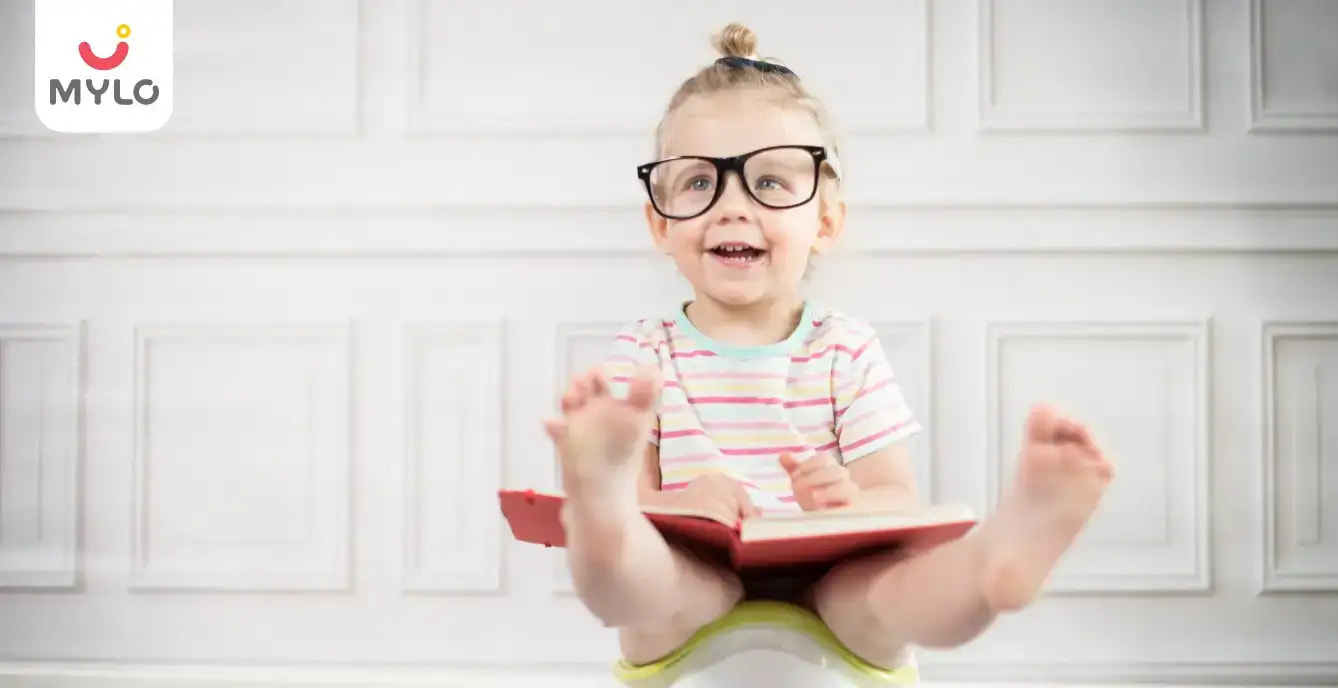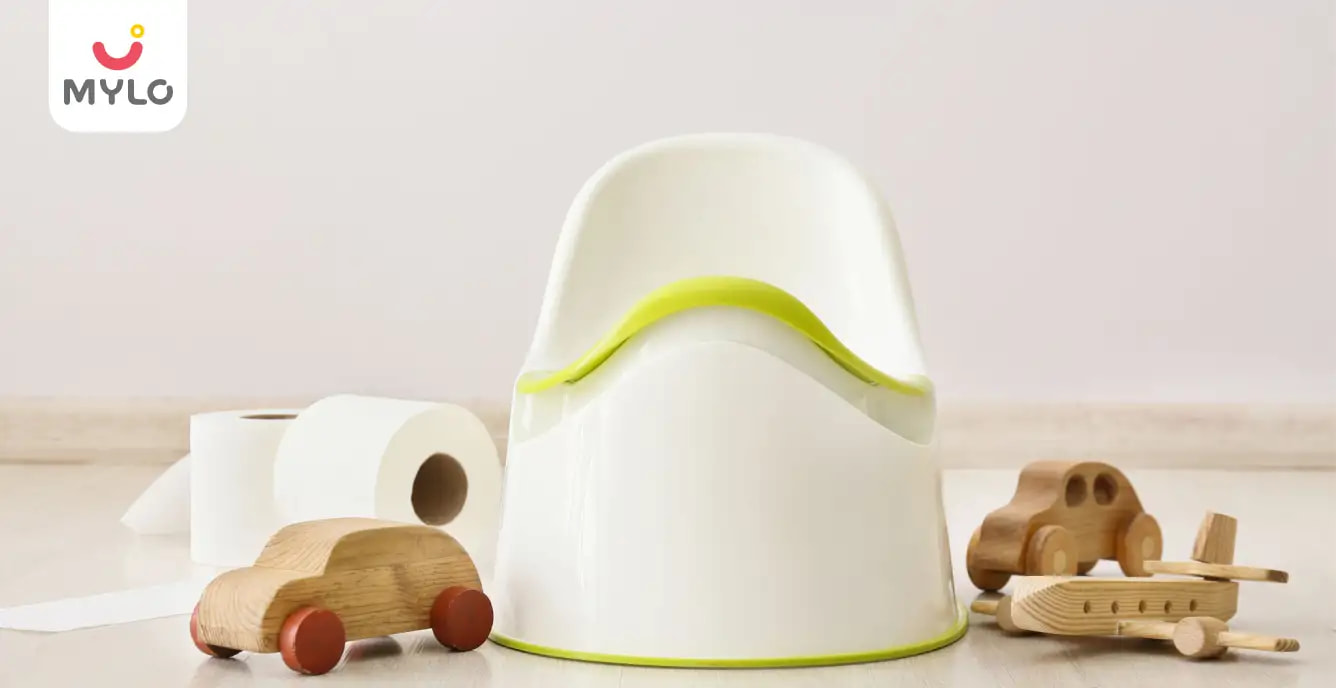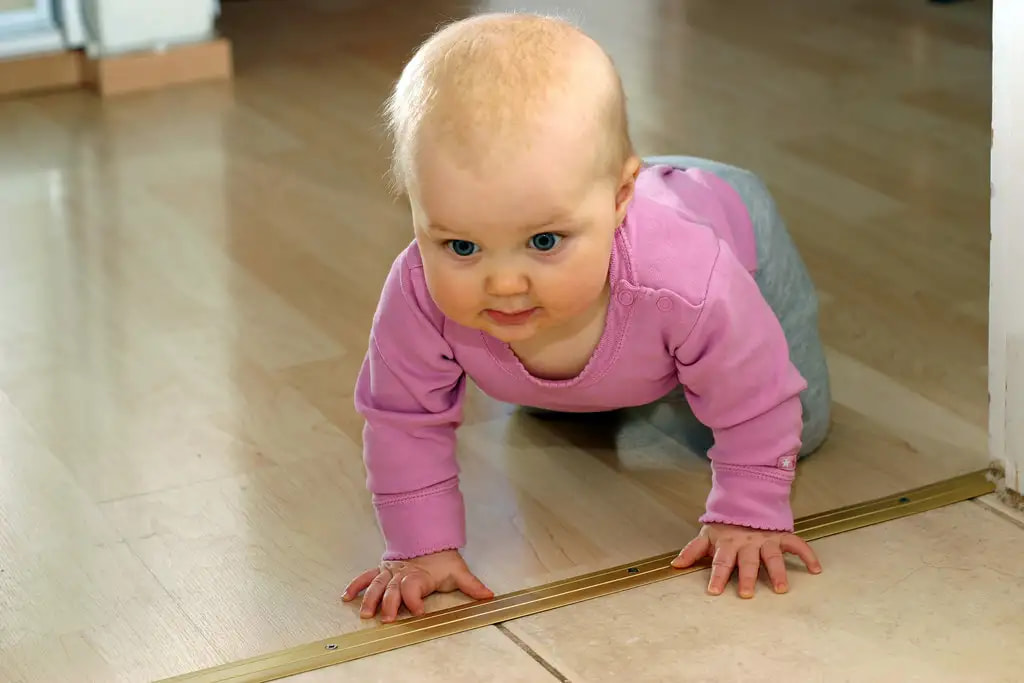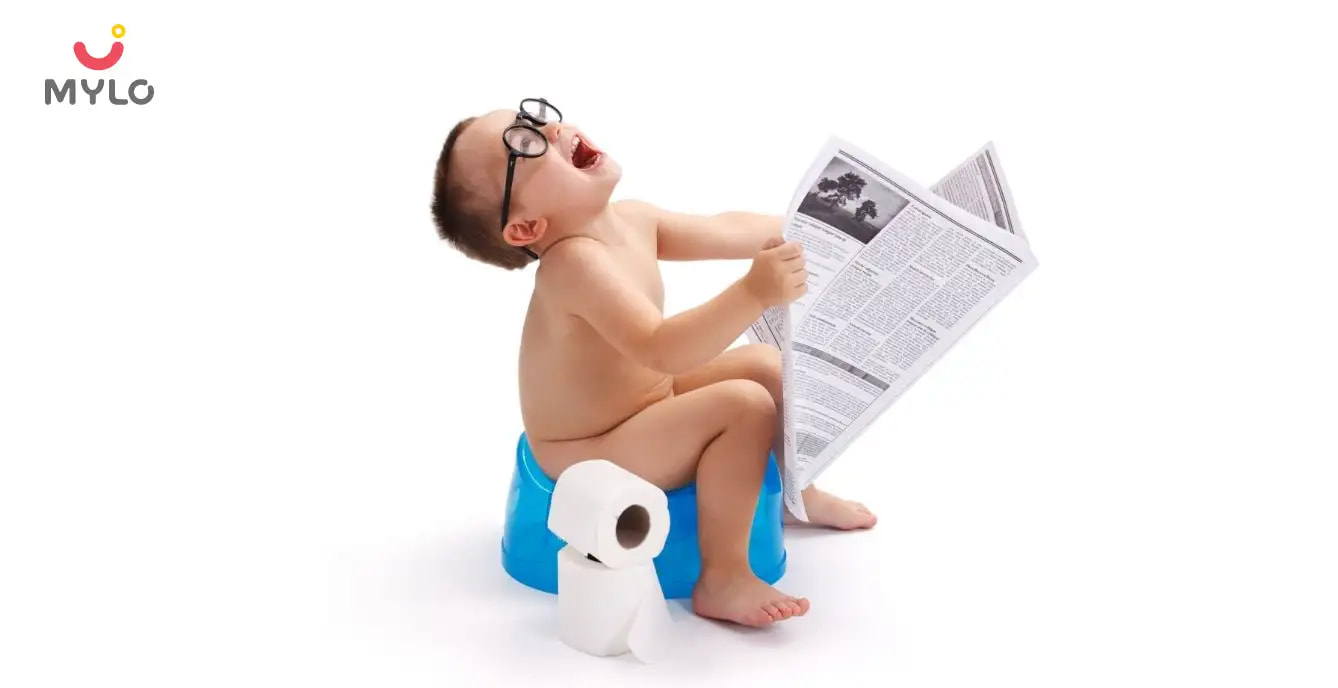Home

Potty Training

When to begin toilet training your child
In this Article
Potty Training
When to begin toilet training your child
Updated on 5 July 2023
There is no right age to toilet train a child. Readiness to begin toilet training depends on the individual child. In general, starting before age 2 (24 months) is not recommended. The readiness skills and physical development your child needs occur between age 18 months and 2.5 years.
Your child will show cues that he or she is developmentally ready. Signs of readiness include the following:
-
Your child can imitate your behavior.
-
Your child begins to put things where they belong.
-
Your child can demonstrate independence by saying “no.”
-
Your child can express interest in toilet training (eg, following you to the bathroom).
-
Your child can walk and is ready to sit down.
-
Your child can indicate first when he is “going” (urinating or defecating) and then when he needs to “go.”
-
Your child is able to pull clothes up and down (on and off).
Each child has his or her own style of behavior, which is called temperament. In planning your approach to toilet training, it is important to consider your child's temperament.
-
Consider your child's moods and the time of day your child is most approachable. Plan your approach based on when your child is most cooperative.
-
If your child is generally shy and withdrawn, he or she may need additional support and encouragement.
-
Work with your child's attention span. Plan for distractions that will keep him or her comfortable on the potty chair. For example, reading a story to your child may help keep him or her interested.
-
Consider your child's frustration level, and be ready to encourage and reassure him or her at each step.
Before you begin toilet training, have your child examined by his or her health care provider. During your child's check-up, talk with the health care provider about the child's developmental readiness and temperament. Your health care provider can help you determine whether your child is ready to begin toilet training and help you plan your approach.
Timing is important. Toilet training should not be started when the child is feeling ill or when the child is experiencing any major life changes such as moving, new siblings, new school, or new child-care situation.
If your child is feeling too pressured to toilet train or if the process is too stressful, he or she may begin to withhold urine or stool. Withholding can be the result of too much pressure or can be caused by constipation (hard and painful stools).
Try not to feel pressured to toilet train your child. If you are feeling pressured to train your child because of caregiver considerations or family members' views, your anxiety about toilet training can create anxiety in your child.
GETTING STARTED
What to Know
-
Toilet training includes discussing, undressing, going, wiping, dressing, flushing, and hand-washing. Remember to reinforce your child's success at each step.
-
There are many steps to the toilet training process. The more ready the child is when you begin, the more quickly the toilet training process will go.
-
Initial success relies on your child understanding the use of the toilet, not mastering the process.
-
Check your child's stools. It is very important that they are soft. Hard stools can be very painful and are difficult to pass. If your child's stools are hard, add fiber to your child's diet and consult your health care provider for a recommended stool-softener. When the stool is softer, reassure your child that now it won't hurt.
-
A high-fiber diet and reduced quantity of dairy products can help soften the stool and develop and maintain regular bowel movements. Because children can resist being forced to eat nutritious foods, and because they learn best by example, eating a high-fiber balanced diet yourself will encourage your child to eat well.
What To Do
-
Get a potty chair. Many children feel more secure on a potty chair than on a toilet because when they sit, their feet are securely on the floor and they are not afraid of falling off or in.
-
Allow your child to become familiar with the potty chair. Let your child observe, touch, and get comfortable with the potty chair before attempting to use it. Also, introduce the potty chair to your child as his or her own chair.
-
Place the potty chair in a convenient place for your child. The potty chair does not have to be limited to the bathroom. Keep it in the playroom, in the yard, or wherever your child is playing, so your child can get to it when he or she wants.
-
If your child is afraid of the potty chair, don't pressure him or her to use it. Put toilet training aside for 1 or 2 months, and give your child time to get used to the idea of the potty chair and to be comfortable with it.
-
Let your child first sit on the potty chair fully clothed once a day as a routine. Also, let your child leave the potty chair at any time, and never force your child to spend time sitting on it.
-
After your child is comfortable sitting on the potty chair with clothes on, let him or her sit there without clothes.
-
Take the stool from your child's cloth diaper and put it into his or her potty chair so that your child can see where it should go.
HELPFUL TIPS AND SUGGESTIONS
Setbacks
Setbacks are to be expected, not to be seen as a failure or regression, but as a temporary step back. Setbacks are normal and may occur when your child feels too much pressure.
Setbacks can be frustrating, but your child needs encouragement and reassurance from you. Try to remember that this is your child's task, not your own.
Coordinating Plans
Make sure to coordinate your toilet training plans with others who may be with your child during the day (caregivers, grandparents, day care staff members). It is important that they know how you want your child to be trained so that the child receives the same message during the day when you are not present as during evenings and weekends when you are.
Parental Encouragement
Make this experience as positive, natural, and nonthreatening as possible so that your child feels confident that he or she is doing it on his or her own. Often, what seems like laziness in your child is resistance to pressure or immaturity. Your child is likely to want to be trained as much as you want him or her to be trained.
-
Encourage imitation. When you sit on the toilet, allow your child to sit on the potty chair beside you.
-
Boys should learn to urinate sitting first, because if they stand first, they may not want to sit to have a bowel movement.
-
Start a routine with regular reminders beginning with one time a day—after breakfast or maybe at bath time when your child is already undressed.
-
Watch for behavior, grimaces, or poses that may signal the need for a bowel movement, and ask your child if he or she needs to go.
-
Praise your child whenever he or she tells you that he/she needs to go and when your child tells you without being reminded.
-
Let your child flush if he or she wants to. Because some children do not like the sound of the toilet or are afraid of the toilet, be sure to determine whether your child is scared. Also, try to reassure your child if he or she becomes upset about the disappearance of the stool down the toilet.
Clothing/Diapers
Keep your child in loose, easy-to-remove clothing. Help your child master the dressing and undressing needed to sit on the potty chair. Once the child is comfortably sitting on the potty chair with clothes on, then try it with clothes off.
When your child is using the potty chair successfully several times a day, he or she may be ready for underwear for part of the day. Because diapers can be very reassuring, do not rush your child out of diapers.
Your child's skin is just as likely to get a rash from wetness or exposure to a stool as it did during infancy. Therefore, keeping your child dry and clean is as important during training as it was when he or she was an infant. Change your child regularly, and do not leave him or her in soiled clothing as a training method.
Disposable or nondisposable training pants may be used as part of the transition from diaper to underwear, but they are not recommended as an initial step. They may be helpful when your child is ready to take over the training process.
Specific Training Issues
-
Accidents are common and should be expected in the training process.
-
Boys generally take longer to be trained than do girls.
-
If you feel you need help in the training process, contact your pediatrician or health care professional to discuss any issues you may have.
Night-time Training
Nighttime or naptime dryness may occur at the same time as daytime dryness, although it may not occur until a year or so later. Aside from taking your child to the toilet before going to sleep, here are some other tips to help the child stay dry through the night:
-
Ask your child to withhold urine a little during the day to gain better control.
-
With your child's permission, wake him or her during the night to use the bathroom.
-
A nighttime potty chair kept by the bed can make it more convenient for your child when he or she wakes during the night.
-
If your child is still consistently wetting the bed 1 year after age 7 years, consult your pediatrician or health care professional.



Written by
Priyanka Verma
Priyanka is an experienced editor & content writer with great attention to detail. Mother to an 11-year-old, she's a ski
Read MoreGet baby's diet chart, and growth tips

Related Articles
RECENTLY PUBLISHED ARTICLES
our most recent articles

General Father
Are you a first time dad & scared? Here's some help
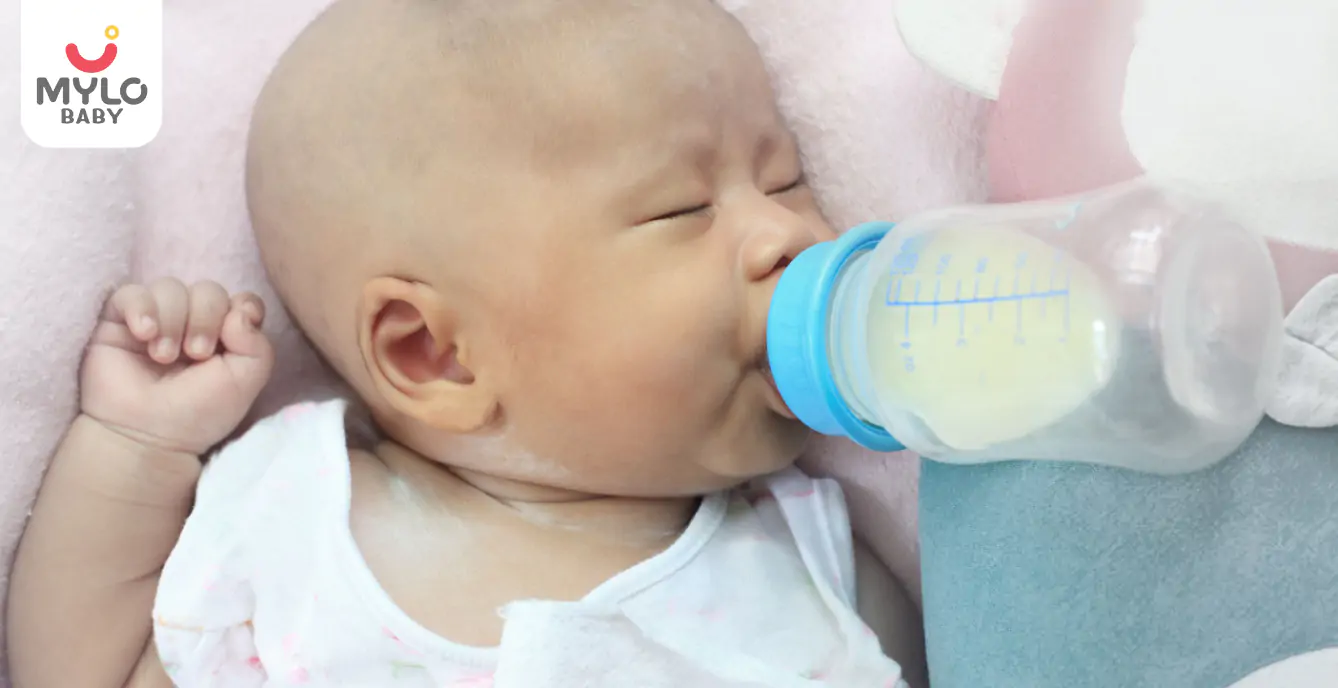
Care for Baby
Is your baby 3 months old now? Here's how to set-up a perfect sleep and feeding schedule for your little one?
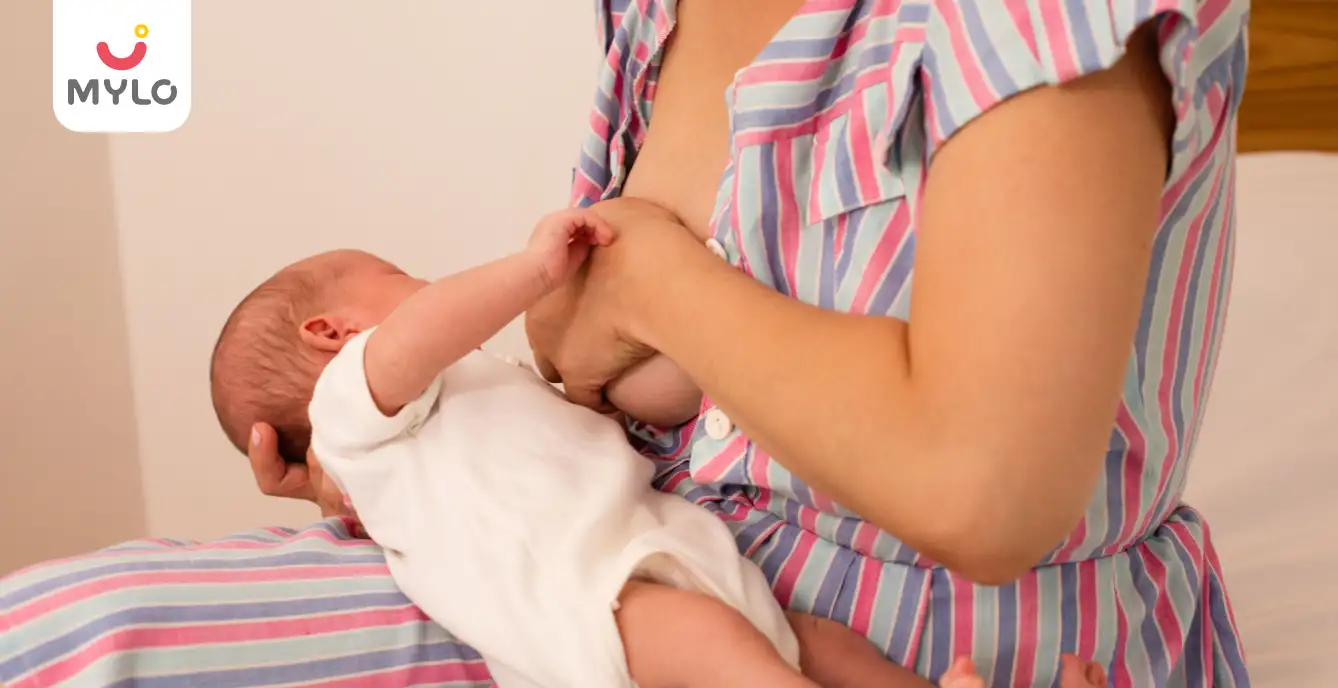
Breastfeeding Barriers
Painful Nipples During Breastfeeding: A Step-by-Step Approach for Managing Discomfort

How to Manage and Alleviate Round Ligament Pain During Pregnancy?

Scans & Tests
FSH LH Prolactin Test: What This Group of Tests Can Tell You About Your Fertility

Medications
Why Berbitol is the Missing Piece in Your Supplement Stack
- Top 10 Action Movies to Watch on Netflix in 2023
- Foods to Avoid After Embryo Transfer & Other Precautions to Boost Your Chances
- Semen Analysis: A Comprehensive Look at Male Reproductive Health
- Understanding Premature Ejaculation: Causes, Symptoms, and Treatment Options
- Gokshura: The Ancient Ayurvedic Remedy for Optimal Sexual Health and Wellness
- Retrograde Ejaculation: Unraveling the Mystery Behind This Uncommon Sexual Dysfunction
- Fertisure F: The Key to Unlocking Your Fertility Potential & Chances of Conception
- Here's everything you need to know if you want to give potty training to your infant or try Elimination Communication.
- Top 4 Kinds of Infertility Treatments to Cure Male Infertility
- Sleeping positions during pregnancy
- Burning Sensation After Sex: What Could It Mean
- Hormonal Imbalance in Men: What You Need to Know About Its Hidden Effects
- Kapikacchu: The Secret Ingredient for Boosting Fertility and Libido
- Safed Musli: The Secret Ingredient to Boost Your Immune System and Lifestyle


AWARDS AND RECOGNITION

Mylo wins Forbes D2C Disruptor award

Mylo wins The Economic Times Promising Brands 2022
AS SEEN IN
















- Mylo Care: Effective and science-backed personal care and wellness solutions for a joyful you.
- Mylo Baby: Science-backed, gentle and effective personal care & hygiene range for your little one.
- Mylo Community: Trusted and empathetic community of 10mn+ parents and experts.
Product Categories
baby carrier | baby soap | baby wipes | stretch marks cream | baby cream | baby shampoo | baby massage oil | baby hair oil | stretch marks oil | baby body wash | baby powder | baby lotion | diaper rash cream | newborn diapers | teether | baby kajal | baby diapers | cloth diapers |



